
See the Whole Organization on a Single Page
Key Themes and Integration[i]
Definitions and notes:
- KEY. Major or most important elements that are critical to achieving your intended outcome
- The Criteria (available for purchase, Baldrige Website) refer to key challenges, plans, work processes, and measures – those most important to your organization’s success. They are the essential elements for pursuing or monitoring a desired outcome. Key is generally defined as the most significant five (e.g., five key challenges etc.).
- KEY THEME. Term used to describe an overarching topic regarding an organization.
- Key Factor. What is important to your organization and sets the context for your organization (Purpose, Mission, Vision, Values, Strategic Advantages Challenges, etc.). It serves as the background for all you do. Your processes and process results should relate to the context you describe in this profile.
Note: Key Factors are typically described as your response to the Organizational Profile.
- PERFORMANCE EXCELLENCE. An integrated approach to organizational performance management that results in (1) delivery of ever-improving value to customers and stakeholders, contributing to ongoing organizational success; (2) improvement of your organization’s overall effectiveness and capabilities; and (3) learning for the organization and for people in the workforce.
Key Themes Tool
The Key Factors, Criteria, Core Values and Concepts, and Scoring Guidelines provide a framework and assessment tool for understanding your organization’s strengths and opportunities for improvement and, thus, guiding your planning toward achieving higher performance and striving for excellence. The Key Themes Tool uses this framework for performance excellence. Starting with The Bookends (Figure 1), then everything happens between these two standards.
- The first bookend is the “ideal organization” based on the Core Values and Concepts (see earlier post). This is theoretically the organization you “hope to replicate”.
- The second bookend measures your ability to “replicate this goal”, including your ability to replicate the ideal approaches, deployment, learning, integration and performance results.
Figure 1 – The Bookends
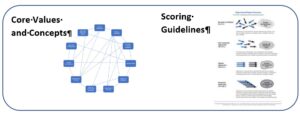
Integration-Mapping
Integration-Mapping is an approach that will help you discover your organization’s Key Themes.
The concept is on based picking a topic and using the “text mapping” technique to flush out Key Themes. See Figure 2 using the topic “Visionary Leadership” and the seventeen basic Criteria questions which are the most central concept of the item (see basic question, Figure 3). You can create an Integration-Map for all Core Values, Purpose, Mission, Challenges / Opportunities, etc.
Figure 2 – Integration of the Basic Criteria Requirements
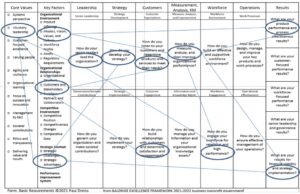
Figure 3: Criteria for Performance Excellence Structure
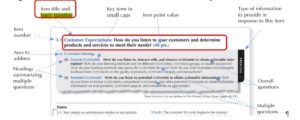
The key is to listen and to learn from the interrelated information the you discover during the process. Integration-Mapping uses the Book Ends (Figure 1, Ideal and Ability) as lens to determine your organizations own maturity.
The other variations of Integration-Mapping include:
- Replace the seventeen basic criteria questions in the form (Figure 2) with your actual data. Record your own Key Factor in column two. In simple bullet form (Figure 4), post your response to the seventeen basic questions. This basic response and your own Integration-Map of the information will help you learn and discover your Key Themes.
- Figure 5 – If you have feedback from an assessment, the next variation to this approach is to replace the questions with the assessment feedback. Identify a “TAG” for each feedback comment (Note: a TAG is a two- or three-word phase that provides a Topic All Get). Post a strength comments TAG with a plus (+) and an opportunity TAG with a minus (-). “Integration-Map” the feedback to discover key themes based on you own data.
- You can then move to the subtext content (Figure 6), and overall requirements (Figure 7 and Figure 8). The importance here is to simply learn how complex and interconnected the organization actually is an interconnected whole – clamoring for integration.
Figure 4 – Example, Basic Response (and Map for Focus on Success and Innovation)
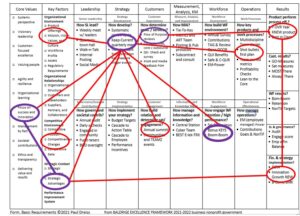
Figure 5 – Example, Posting TAGs from Feedback Report (and Map to Key Themes)
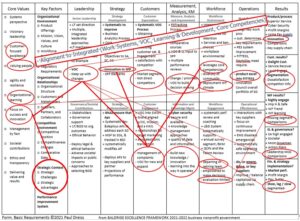
The TAGs (Topic All Get) posted above are from the feedback report for fictitious application. The Case Study and Feedback Report are available (Baldrige Site) for your review. The key themes are:
Process, Key Themes (TAGs)
+ Integrated Processes Support Mission
+ Fact-Based Management
+ Value/Results – Multiple Systematic Integrated Approaches
+ Engagement for Values & Valuing People
– Opportunities, Meaningful Changes to Offerings
– Alignment to Integrated (Work Systems, VOC, Learning & Development, Core Competencies)
– Capacity for agility, transformational change and projections
Results, Key Themes (TAGs)
+ Key Results Performance (industry – focus areas of finance, customers, and team members)
+ Many favorable customer-focused results
+ key workforce measures
– Several areas of importance (key customer, market, and process requirements)
– Segmentation of Results Data
Figure 6 – Form with subtext content (and Map for Valuing People)
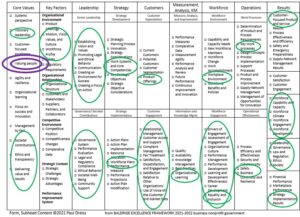
Figure 7 – Form with overall requirements (Left-side of Form, Management by Fact)
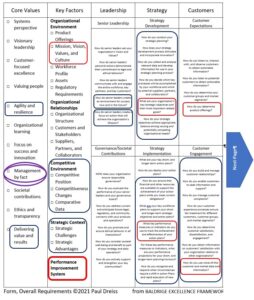
Figure 8– Form with overall requirements (Right-side of Form, Management by Fact)
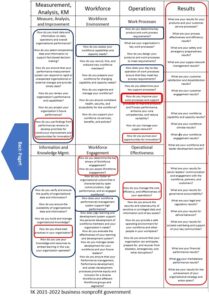
Use this approach to help you refine and build new strength and maturity within your organization. A new post in the series Integration within the Organization is coming next week. Hope to see you there.
[i] Definitions and text adapted and based on the Baldrige Criteria – 2021-2022 Baldrige Excellence Framework

Paul Dreiss
Quality Advisor
Paul Dreiss has a proven track record of establishing and revitalizing organizational quality systems in multiple industries and service organizations. Two areas of focus include: Quality Management System – Developed organizational policies, procedures and work instructions that your…
